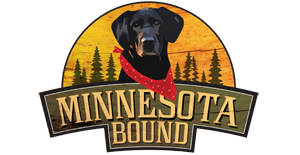A few decades ago, lead was banned from use in paint, gasoline and other and products in the United States because of the serious health affects it can have on humans. but we’re not the only ones affected. Many species of birds are especially impacted by lead because of their unique digestive systems.
Lead sinkers pose a major threat to many water birds species including swans, geese and the Minnesota state bird, the loon. These birds use small stones in their crop to help grind and digest their food. However, if a loon mistakenly ingests a small lead sinker, that can be a lethal dose of lead.
Bald eagles are particularly susceptible to lead poisoning because of their strong stomach acids. Bald eagles might eat a fish that contains a lead sinker or tackle. When an eagle ingests lead, extremely acidic stomach acids break down the lead and high concentrations of lead are released into the bloodstream. The same health effects from lead that affect humans can then debilitate and kill the bird. Even a tiny amount of lead can be lethal to an eagle.
Another common source of lead poisoning in eagles is lead shot. Although lead has been banned in waterfowl shot for many years, lead is still very common in upland game hunting. In winter, bald eagles often feed on deer carcasses. If a carcass or gut pile has even the tiniest shrapnel of lead, it can be a lethal dose for a full grown eagle. Lead shrapnel the size of the tip of your pencil can kill an eagle.
Lead in the bird’s bloodstream causes neurological damage including visual and motor impairments, just as it would in humans. For the eagle trying to survive in the wild, these impairments can be deadly or result in a secondary injury, like getting hit by a vehicle. If they are unable to fly or find food, an eagle cannot survive. The lead in their blood continues to cause organ failure and ultimately death in just a few days.
At the National Eagle Center, we see many injured birds throughout the year. In 2011, we saw 12 bald eagles, six of which died as a result of lead poisoning. Lead poisoning is perhaps the greatest preventable threat to eagles today. The number of lead poisoned eagles seems to increase sharply in the months of November and December, when lead tainted carcasses are most available.
We have seen the successful return of the once endangered bald eagle. We know our actions have an impact on wildlife. You can help eagles and other water birds by finding out about the many alternatives to lead tackle and ammunition that are available. These alternatives might cost a little more, but when compared with the unnecessary suffering and death of our national symbol, it seems a small price to pay. Secondly, spread the word. Once you know the impact of lead on eagles and other birds, share that knowledge with others. Teach young hunters and anglers about how they can help protect wildlife and the environment so they can enjoy the sight of a majestic bald eagle soaring overhead for years to come.
Here are a few sites that have more information about lead poisoning in birds:
http://www.nwhc.usgs.gov/publications/fact_sheets/pdfs/lead_poisoning_wild_birds_2009.pdf - USGS National Wildlife Health Center
http://www.pca.state.mn.us - Minnesota Pollution Control Agency
http://www.raptor.cvm.umn.edu/MedicalServices/RaptorMedicine/LeadPoisoning/home.html - MN Raptor Center

Eagle Blog
The Bald Eagle blog for the best EagleCam on the net!
Minnesota Bound
Sharing Stories of the Great Outdoors
Ron Schara, and his trusted black lab, Raven, began sharing stories of the outdoor lifestyle back in 1995. Minnesota Bound is the show that started it all for Ron Schara and he quickly found a passion for putting his words onto the television screen. Today, it remains a trademark program and is now running over 600 episodes strong. We seek characters that have a story to tell. We seek out destinations and find out what makes them special. We share the love of outdoors and those that enjoy it. Yes, it's fishing and hunting, but it's also camping, hiking, canoeing, archery, bird watching, ice climbing and so much more. Minnesota Bound is a fan favorite winning several hundred OWAA awards during its lifespan, including 11 Emmy Awards.
Ron Schara Productions | 1000 Boone Ave. N. Suite #1200, Golden Valley, MN. 55427, United States
